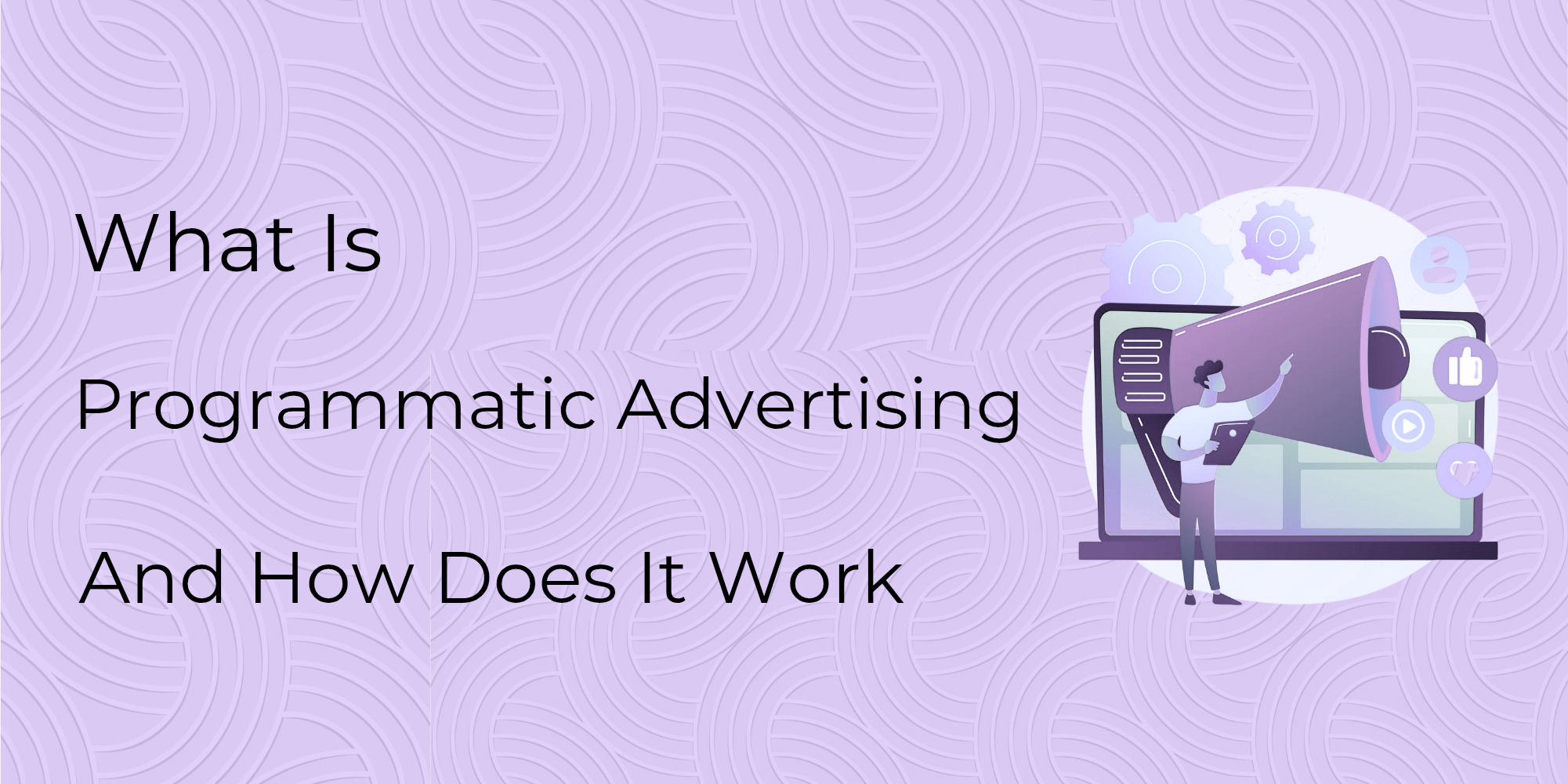Programmatic advertising is a revolutionary approach to buying and selling digital advertising space using automated systems, algorithms, and data-driven insights. It has transformed the landscape of online advertising, replacing traditional manual processes with real-time bidding (RTB) and data-driven decisions. This blog post will explore what programmatic advertising is, how it works, its benefits, types, and key strategies for businesses looking to incorporate it into their digital marketing efforts.
What Is Programmatic Advertising?
Programmatic advertising is the application of software to facilitate the automation of purchasing and selling digital advertisements. Unlike conventional advertising techniques, where advertisers negotiate and buy ad space manually, programmatic advertising relies on algorithms to purchase ad inventory in real-time. The process guarantees that the advertisements are delivered to the intended audience, at the intended time, and on the intended platform. By utilizing data and automation, programmatic advertising allows advertisers to target more precise audiences, improve campaign effectiveness, and ultimately, achieve greater return on investment (ROI).
● How Does Programmatic Advertising Work?
The programmatic advertising process is very intricate, but it can be simplified into a couple of main steps:
- Advertisers and Publishers: Advertisers are businesses or brands who wish to market their products, and publishers are platforms or websites that have ad space available. In programmatic advertising, both interact using automated systems.
- Demand-Side Platform (DSP): This is where the advertiser’s transaction occurs. A Demand-Side Platform is a program that enables advertisers to buy ad space in real time. DSPs communicate with numerous ad exchanges and allow advertisers to bid on available ad impressions.
- Supply-Side Platform (SSP): On the publisher side, the Supply-Side Platform is where publishers sell and manage their ad inventory. SSPs enable publishers to derive maximum revenue from their ad space by offering it up to programmatic buyers.
- Ad Exchange: Ad exchanges are the platform where SSPs and DSPs come together. They enable the real-time auctioning process wherein ad impressions are transacted. The exchange decides which advertisement will be displayed based on the winner of the bid and other targeting options.
- Real-Time Bidding (RTB): RTB is the foundation of programmatic advertising. RTB is the method through which an advertiser will bid for ad inventory in real time. Upon a user visiting a website or mobile app, an ad auction is launched, and several advertisers bid to show their advertisements. The advertiser who bids the most gets the opportunity to display their ads, and the ad is displayed to the user in nearly real time.
- Targeting and Data: Programmatic advertising has the advantage of being able to target audiences based on numerous data points. Advertisers have the ability to target users based on demographic data, browsing habits, interests, geolocation, etc. This means that ads will be extremely relevant to the user, making it more likely for them to be engaged with.
- Ad Delivery: After the auction is finished, the advertisement is delivered to the user. The whole process, from bidding to ad delivery, occurs within milliseconds, providing an efficient user experience.
● Programmatic Advertising Types
Programmatic
advertising takes various forms, each of which is specific to fulfill certain campaign objectives and strategies. These are the primary types:
- Real-Time Bidding (RTB): RTB is the most popular and prevalently utilized form of programmatic advertising. It is an auction-based system where several buyers bid for an ad impression in real-time. The winning bidder gets the impression, and the ad is displayed to the user. RTB is normally utilized for display ads, video ads, and native ads.
- Private Marketplace (PMP): A Private Marketplace is a closed auction in which premium ad inventory is made available to select advertisers by publishers. PMPs offer more exclusivity and control for publishers and advertisers compared to RTB, which is available to everybody. This method of programmatic buying guarantees better-quality ad placements.
- Programmatic Direct: While RTB is auction-based, programmatic direct has a fixed price for buying a set amount of ad inventory. Terms are agreed upon in advance by the publisher and the advertiser, and ad inventory is automatically bought and served without having to go through a bidding process.
- Programmatic Video and Audio: Programmatic advertising is not just confined to display advertisements on websites. It also includes audio and video platforms such as Spotify, YouTube, and other streaming media. These ads are purchased programmatically and targeted on the basis of audience behavior, interest, and location.
● Main Advantages of Programmatic Advertising
- Efficiency and Automation: The major advantage of programmatic advertising lies in its automation. It reduces the necessity of manual negotiation, simplifying the process and saving time for publishers as well as advertisers. Its use of algorithms means that ads are purchased and placed in the most efficient manner.
- Improved Targeting: Programmatic advertising facilitates more segmented targeting than traditional advertising. Advertisers can target users based on a range of variables including demographics, browsing history, intent to buy, location, and many more. Such accuracy enhances the relevance of ads, which in turn increases engagement and conversions.
- Real-Time Optimization: Programmatic advertising is one of the strengths that allows campaigns to be optimized in real-time. Advertisers can track campaign performance, refine bidding strategies, and modify targeting parameters to ensure maximum ROI. This is particularly critical for dynamic campaigns that require adapting based on performance.
- Cost-Effective: Programmatic advertising can save money by automating the media buying process of purchasing and selling ads. Real-time bidding also ensures that advertisers pay only for impressions that matter to their target audience, thus avoiding wasted spend on unnecessary ads.
- Data-Driven Insights: Programmatic advertising creates an abundance of data that can be interpreted to understand campaign performance and audience behavior. Advertisers can make more informed decisions, improve targeting, and refine their strategies using this data.
● Challenges and Considerations
Although programmatic advertising has a lot of advantages, it has its challenges too:
- Ad Fraud: An increase in ad fraud has followed the growth of programmatic advertising. Ad fraud methods including bot traffic and click injection can result in wasted ad spend. Mitigating factors are available in terms of tools and technology, including fraud detection systems and verification platforms.
- Complexity: Although automation is a huge advantage, programmatic buying can be complicated, especially for companies that are new to online marketing. The multitude of platforms, data feeds, and bidding schemes can be daunting. Advertisers can have to spend money on training or employ specialists to get the most out of their campaigns.
- Transparency: The ad exchange ecosystem sometimes is less transparent. Advertisers won’t always know where their ads are being shown and how much is being paid at every step in the process. The absence of visibility makes it difficult to determine the actual effectiveness of a campaign.
- Privacy Issues: With the growing emphasis on data-driven targeting, privacy issues have become a top concern for programmatic advertising. Compliance with regulations such as the General Data Protection Regulation (GDPR) and California Consumer Privacy Act (CCPA) has become essential, and advertisers must responsibly manage user data to ensure compliance with data privacy regulations.
● Programmatic Advertising Strategies
In order to maximize the use of programmatic advertising, companies should implement the following strategies:
- Audience Segmentation: The strength of programmatic advertising is that it can target particular audiences. Advertisers need to leverage audience segmentation to develop individualized ads that appeal to various customer segments.
- Retargeting: Programmatic advertising is ideal for retargeting campaigns. By monitoring user action and engagement, companies can display ads to users who have already engaged with their site but failed to convert, and the likelihood of conversion is improved.
- Cross-Channel Campaigns: Programmatic ads can be run across several channels, such as display, video, social, mobile, and others. Cross-channel campaign running assures uniform communication and wider reach on different platforms.
- Dynamic Creative Optimization (DCO): DCO uses data to personalize ads automatically according to the behavior of users, location, etc. Advertisers can then serve more personalized and engaging content to individual users.
- Optimize and Monitor: Programmatic advertising has the advantage of real-time optimization, and hence it’s crucial for companies to keep observing the campaigns’ performance. This allows them to optimize targeting, bidding, and creatives for better outcomes.
● The Future of Programmatic Advertising
Programmatic advertising will continue to get more advanced with digital advertising’s ongoing evolution. A few trends that will determine the future of programmatic are listed below:
- AI and Machine Learning: The infusion of artificial intelligence (AI) and machine learning will make programmatic advertising even smarter. AI has the ability to enhance targeting, bidding strategy, and maximize creative content in real-time.
- Omnichannel Advertising: Programmatic advertising is breaking away from just display ads and covering more channels, including TV, audio, and even out-of-home advertising. This is making advertisers craft a single experience across every touchpoint.
- More Emphasis on First-Party Data: As privacy regulations become stricter and third-party cookies are eliminated, advertisers will use more first-party data to power their programmatic campaigns.
- More Transparency: With the industry under increasing scrutiny, we can anticipate greater transparency in the programmatic ecosystem, ranging from more transparent reporting to greater accountability across all stakeholders.
Conclusion
Programmatic advertising has transformed the digital advertising market by making automation, efficiency, and data-driven decision-making central. It enables advertisers to reach precise audiences, optimize campaigns in real-time, and drive maximum ROI. Nevertheless, companies need to be cautious of the pitfalls like ad fraud, complexity, and privacy issues. With proper strategies and tools, programmatic advertising can assist companies in reaching their target audience successfully and realizing their marketing objectives. “”.
As programmatic advertising matures, companies that adopt this technology will be in a stronger position to compete in a more digital and data-driven economy. Whether you are an owner of a small business or a big enterprise, knowing how programmatic advertising works and how to use it can aid you in getting ahead of your competition and achieving impactful results.


